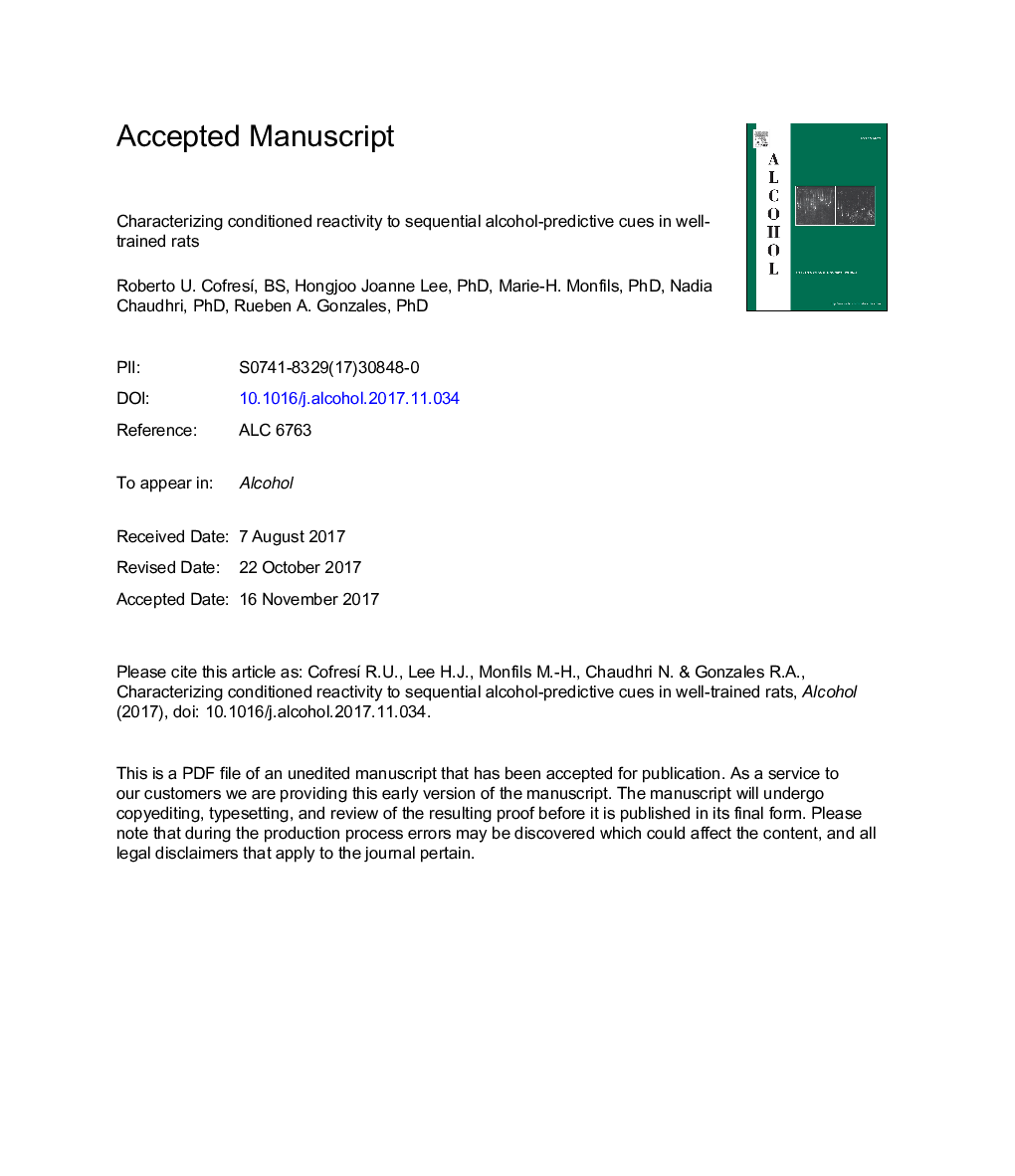| کد مقاله | کد نشریه | سال انتشار | مقاله انگلیسی | نسخه تمام متن |
|---|---|---|---|---|
| 7501417 | 1485960 | 2018 | 38 صفحه PDF | دانلود رایگان |
عنوان انگلیسی مقاله ISI
Characterizing conditioned reactivity to sequential alcohol-predictive cues in well-trained rats
ترجمه فارسی عنوان
مشخص کردن واکنش پذیری شرطی به نشانه های پیش بینی کننده الکل متوالی در موش های صحرایی
دانلود مقاله + سفارش ترجمه
دانلود مقاله ISI انگلیسی
رایگان برای ایرانیان
کلمات کلیدی
نشانه، جستجوی الکل، تهویه مطبوع پاولوویان، الکل کم دوز حافظه نامنظم،
موضوعات مرتبط
علوم زیستی و بیوفناوری
بیوشیمی، ژنتیک و زیست شناسی مولکولی
زیست شیمی
چکیده انگلیسی
Implicit learning about antecedent stimuli and the unconditional stimulus (US) properties of alcohol may facilitate the progressive loss of control over drinking. To model this learning, Cofresà et al. (2017) developed a procedure in which a discrete, visual conditional stimulus (houselight illumination; CS) predicted the availability of a retractable sipper that rats could lick to receive unsweetened alcohol [Alcoholism: Clinical and Experimental Research, 41, 608-617]. Here we investigated the possibility that houselight illumination, sipper presentation, and oral alcohol receipt might each exert control over alcohol seeking and drinking. We also determined the relationship between ingested dose and blood alcohol concentration, in order to validate the idea that the US is a post-ingestive action of alcohol. Finally, we tested a major prediction from the conditioning account of problematic drinking [Tomie, A., & Sharma, N. (2013). Current Drug Abuse Reviews, 6, 201-219], which is that once learned, responses elicited by a CS will promote drinking. We found that despite having constrained opportunities to drink alcohol during the conditioning procedure, ingested doses produced discriminable blood concentrations that supported cue conditioning. Based on our analysis of the dynamics of cue reactivity in well-trained rats, we found that houselight illumination triggered conditioned approach, sipper presentation evoked licking behavior, and alcohol receipt promoted drinking. Reactivity to these cues, which varied in terms of their temporal proximity to the alcohol US, persisted despite progressive intoxication or satiety. Additionally, rats with the greatest conditioned reactivity to the most distal alcohol cue were also the fastest to initiate drinking and drank the most. Our findings indicate that the post-ingestive effects of alcohol may condition multiple cues simultaneously in adult rats, and these multiple cues help to trigger alcohol seeking and drinking. Moreover, identification and characterization of these cues should be helpful for designing interventions that attenuate the power of these cues over behavior.
ناشر
Database: Elsevier - ScienceDirect (ساینس دایرکت)
Journal: Alcohol - Volume 69, June 2018, Pages 41-49
Journal: Alcohol - Volume 69, June 2018, Pages 41-49
نویسندگان
Roberto U. CofresÃ, Hongjoo J. Lee, Marie-H. Monfils, Nadia Chaudhri, Rueben A. Gonzales,
